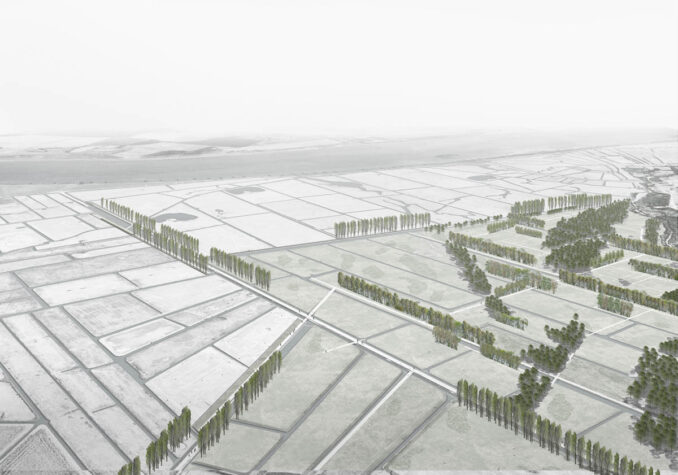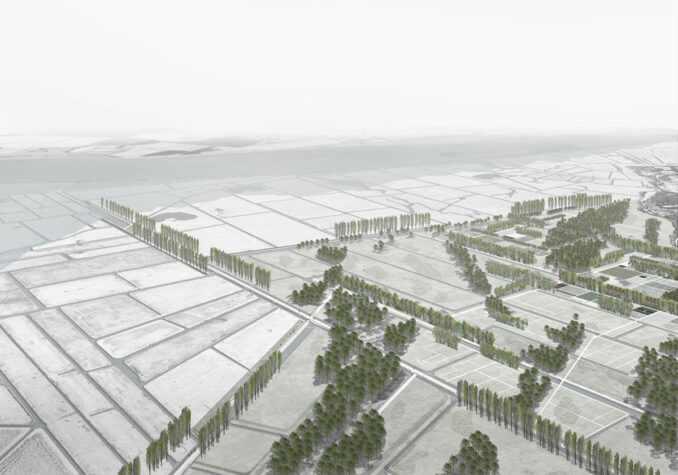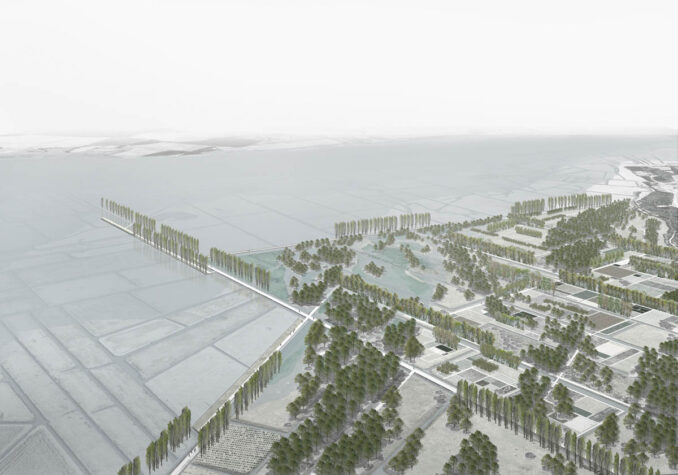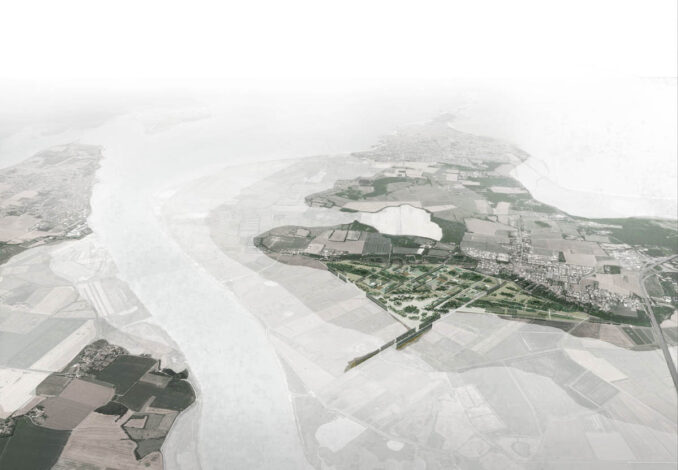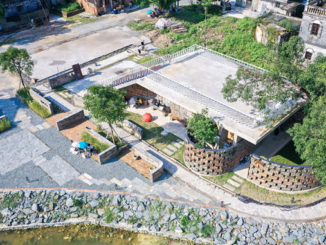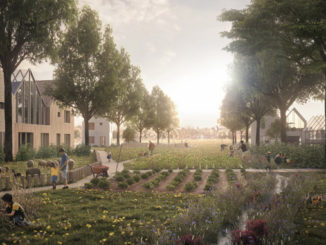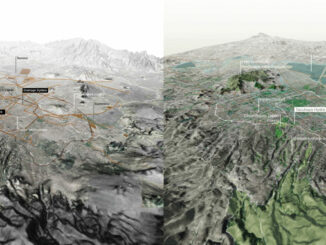Winner of the 2021 WLA Student Awards – Award of Excellence in the Graduate category
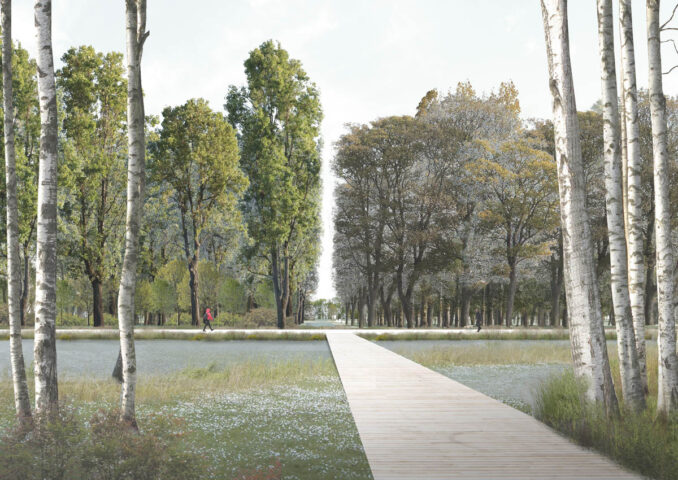
In a time when old landscapes disappear and others – involving new relationships and demands – are taking form, changes manifest themselves with consequences that are often unpredictable. The uncertainty is even greater when related to highly dynamic conditions such as coastal and riverine landscapes that demand theoretical and operational tools able to embrace the shifting character of these territories.
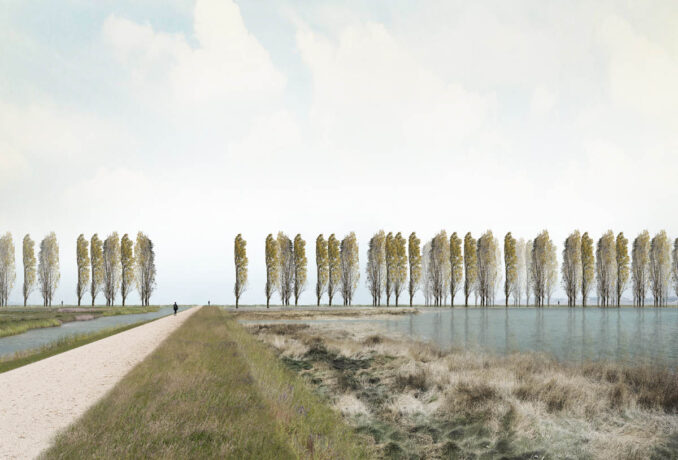
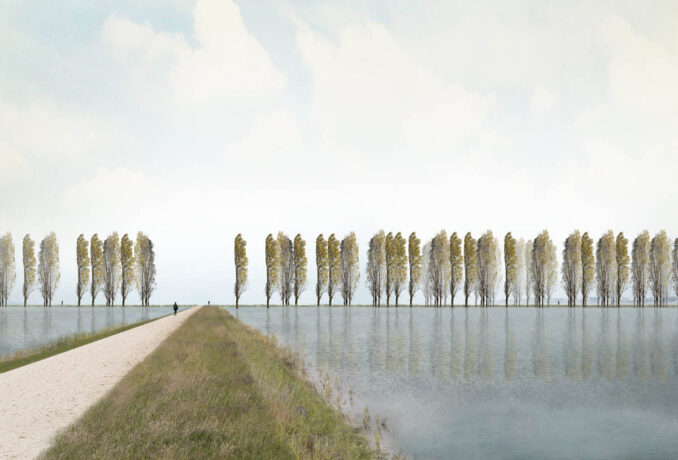
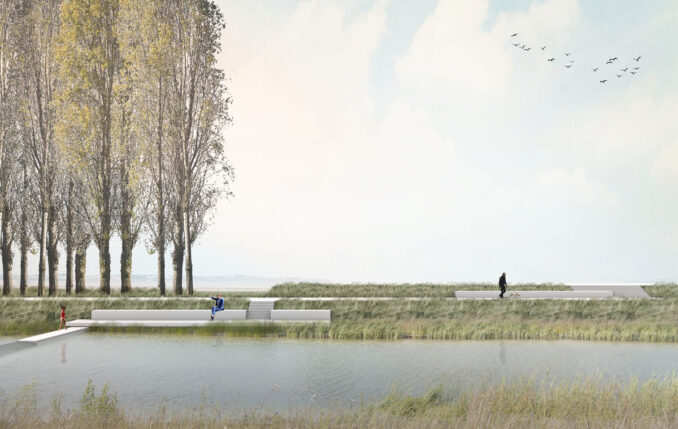
The French term Terrain Vague [tεrε̃ vag] is therefore introduced, within its different etymologies, as an interpretative prism to rethink the uncertain humankind’s relationship with water. Despite its common meaning – often used to describe apparently forgotten places where the memory of the past seems to predominate over the present – Terrain Vague expresses the ambiguity of the line between land (terrain) and water movements (la vague – in French wave), a common meeting ground that accommodates fluidity, openness and complexity.
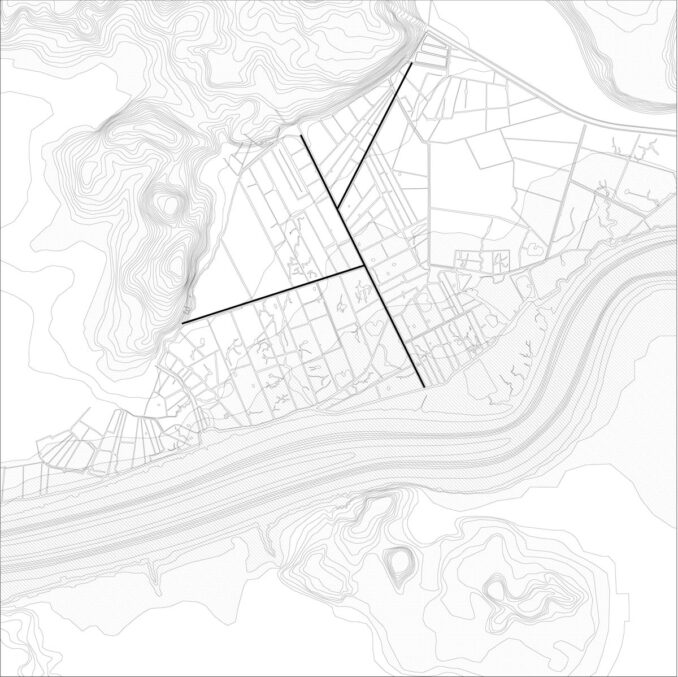
Existing Levees 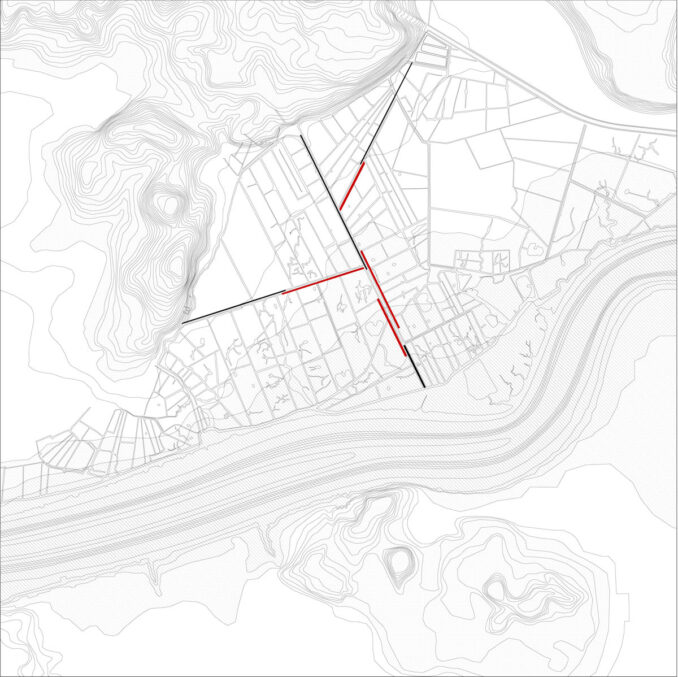
Existing + New Levees 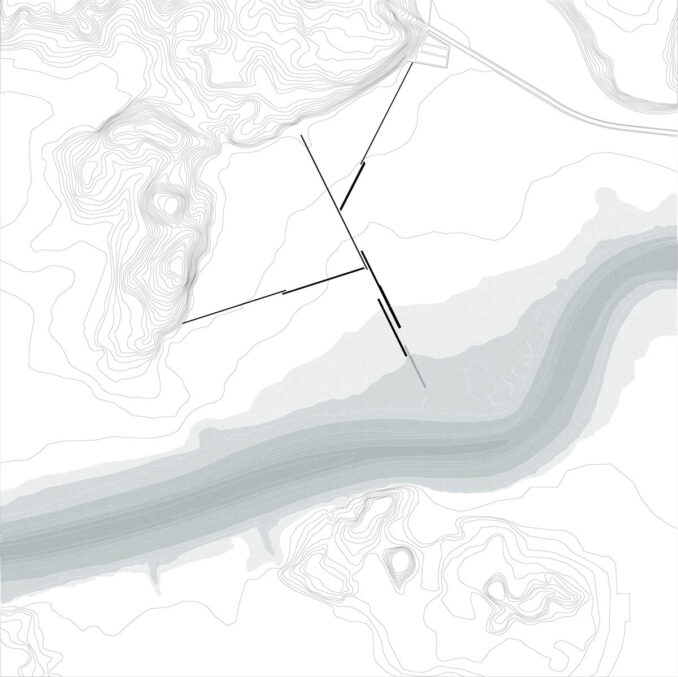
Sea Level Rise +1m 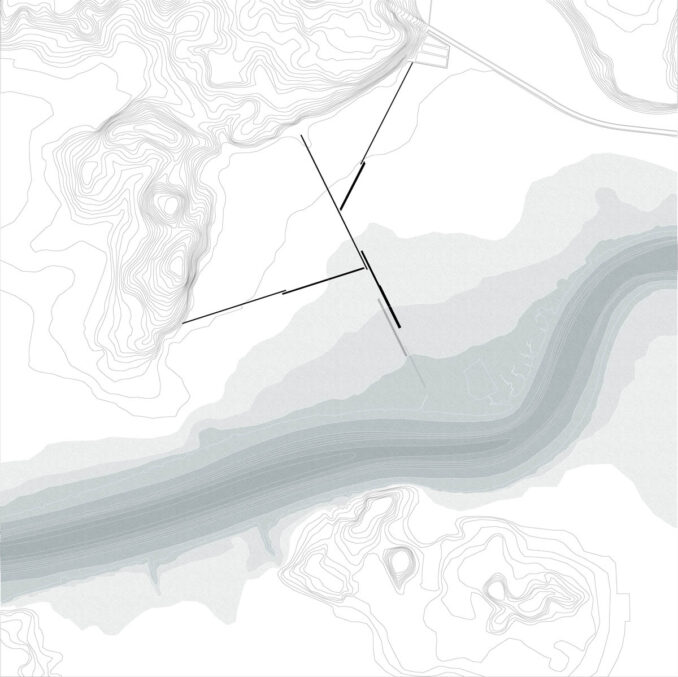
Sea Level Rise +1.5m 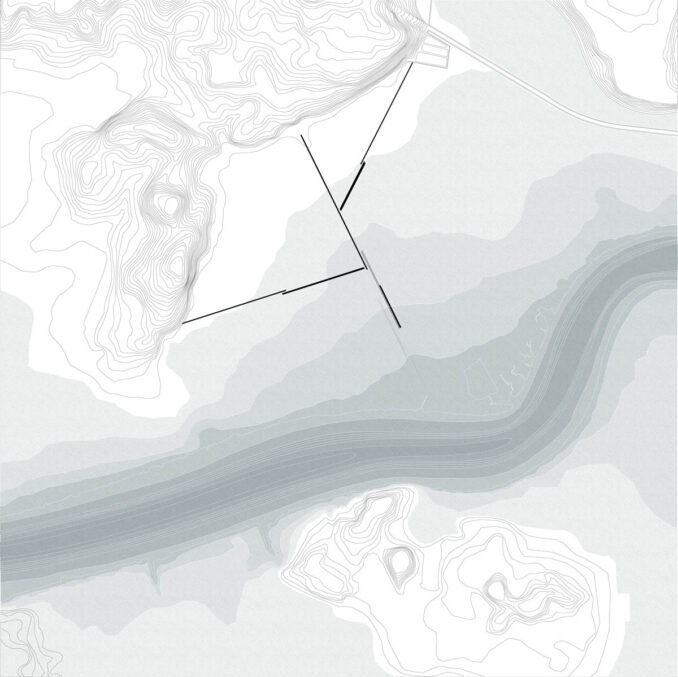
Sea Level Rise +2m 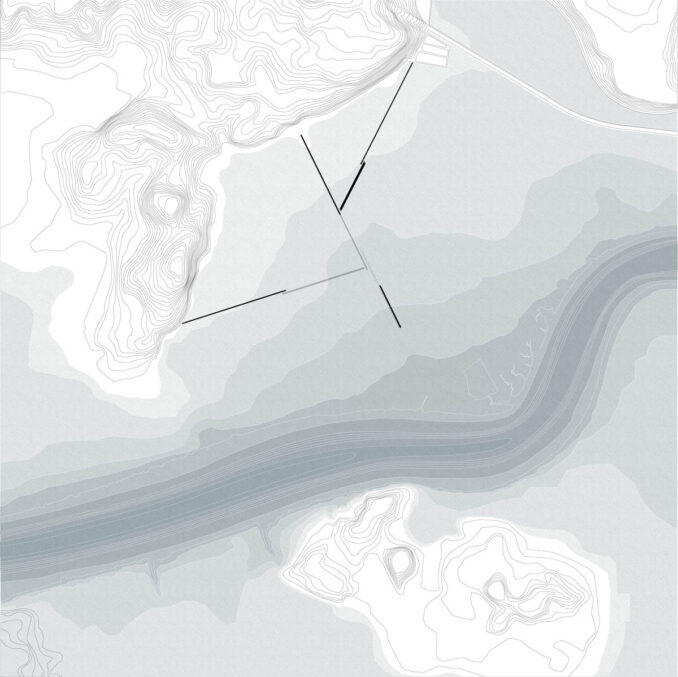
Sea Level Rise +2.5m
Terrain Vague is a thesis research project that engages on a speculative level with the climate adaptation of the Charente estuary in the west coast of France (north of Bordeaux) an anthropized water machine where – due to coastal erosion – most of the cultural landscape is in danger of permanent submersion. After a series of analysis that move back until the last glacial period, the proposal suggests the establishment of a landscape laboratory in one of the river’s meanders, an area characterized by the presence of several earth embankments (levée) built during the Napoleon domain to protect agricultural fields from flooding. The primitive land organization – organized around these important cultural and territorial traces – gives the possibility to define the space of the laboratory, a clear figure determined in continuity with the site’s logic and memory. However, this clear figure is not meant to highlight a close, impermeable area, but a clean identifiable space that will have to negotiate its boundaries with the rising water level, in a continuous process of transformation and interplay between natural mechanisms and man-made interventions.
The proposal will make tangible future water fluctuations, inviting users to recompose the history of the place through a series of traces that amplify resonance and experience of the transposed cultural landscape. From this perspective, that embraces the uncertainty of natural processes as a value, the work re-evaluates use and status of the river’s floodplain, a space where the water-based landscape acquires a generative role in the evolution and perception of the proposal. The composition of perspectives, the monumental promenades and the vegetative sceneries borrowed from the early French garden art are artistically blended with the Nordic tradition of working with openness towards change over time, in a mix that shows an experimental way of conceiving landscape architecture as an act of participation with natural phenomena in dialogue with the shifting legacy of the territory.
The laboratory – placed in the common meeting ground between land and water – becomes a place where to observe and learn from the everyday landscape and its constant changes, in a pedagogical process that invites the participation of experts as well as local communities and visitors.
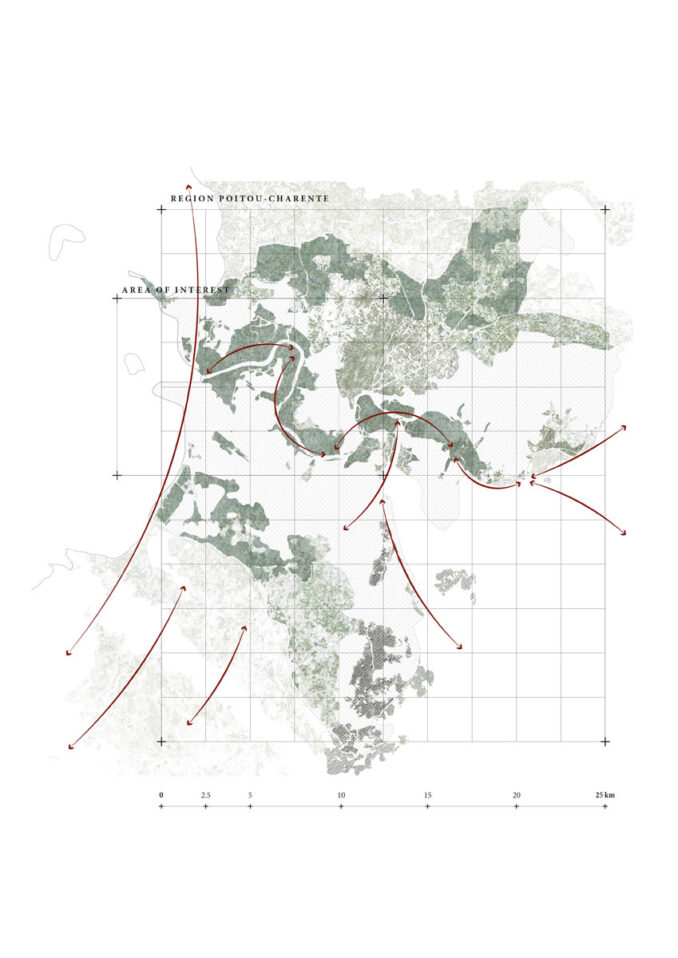
Ecological Patterns 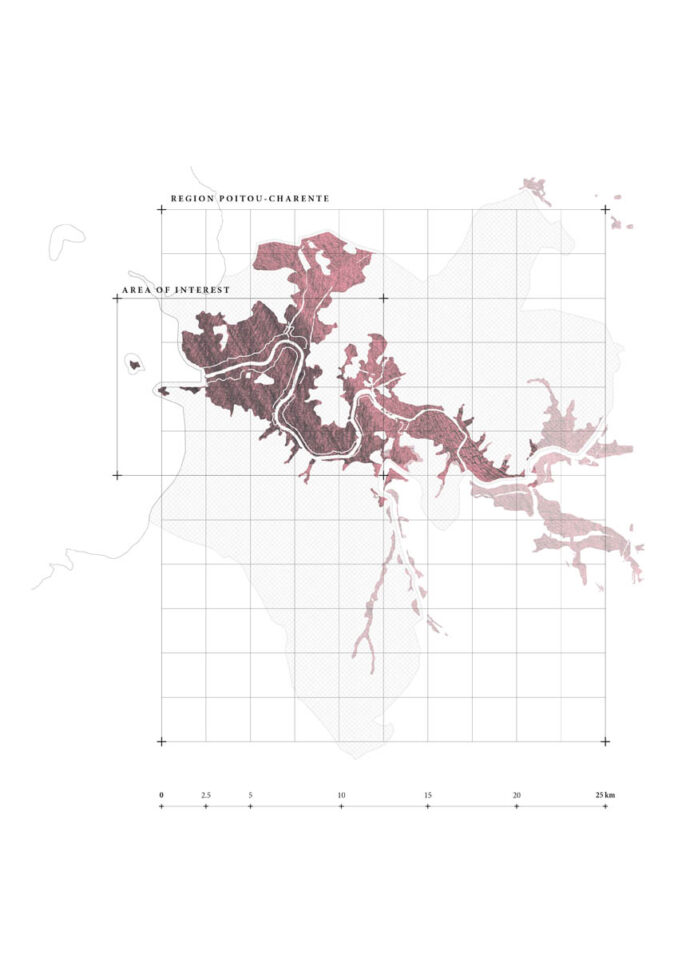
Flooding Risk 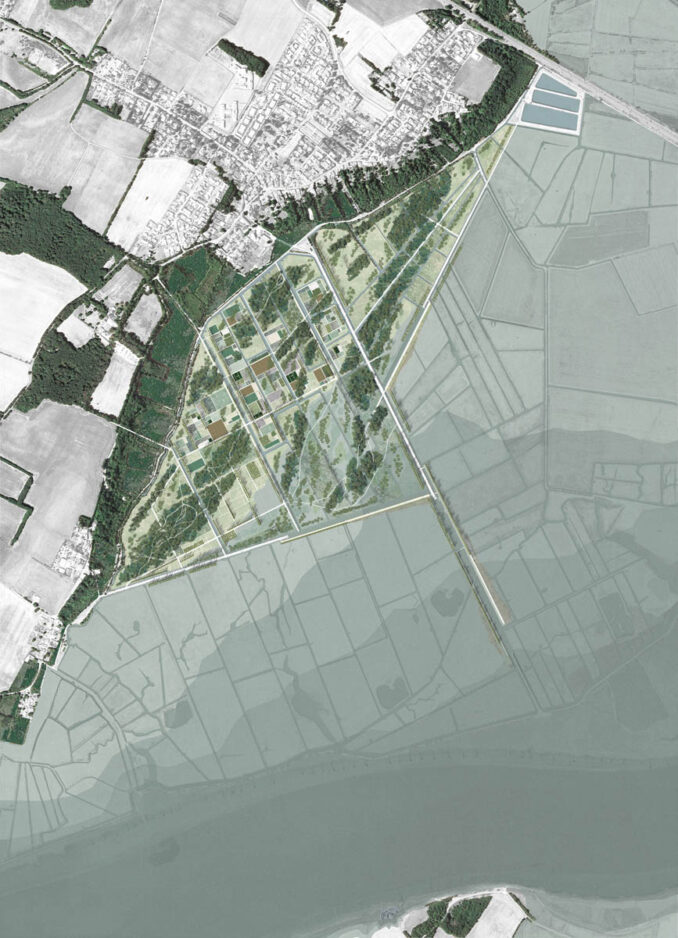
Landscape Laboratory 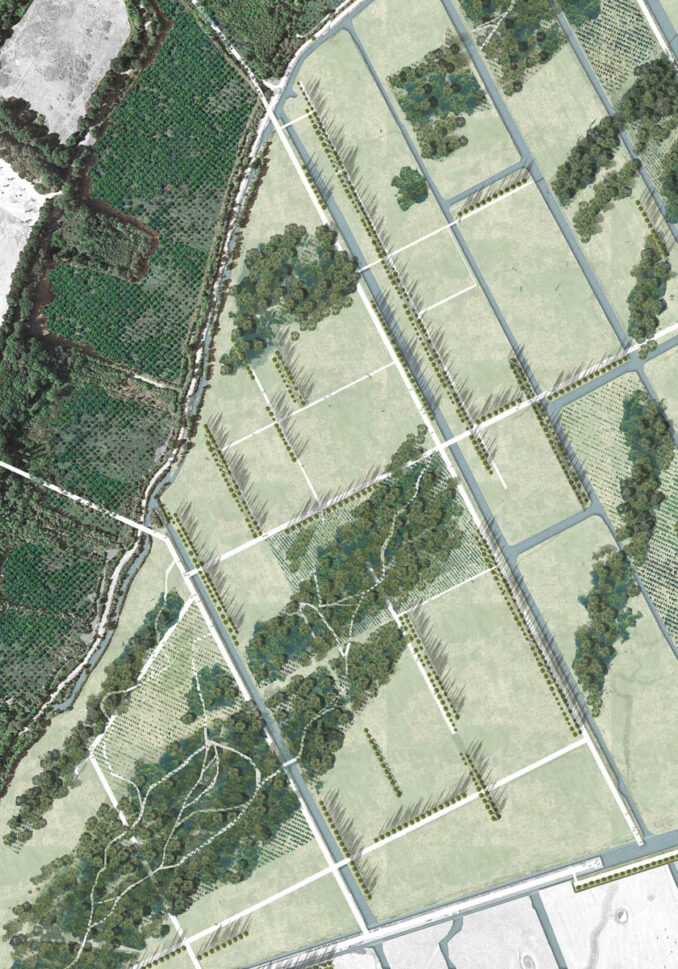
Landscape Laboratory Enlargement
Phase 1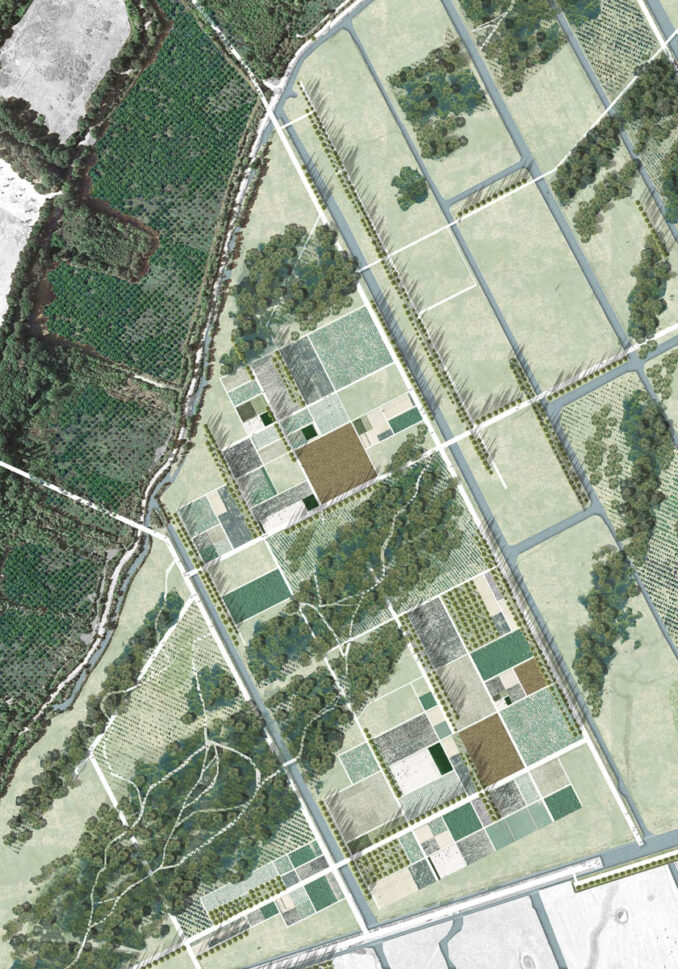
Landscape Laboratory Enlargement
Phase 2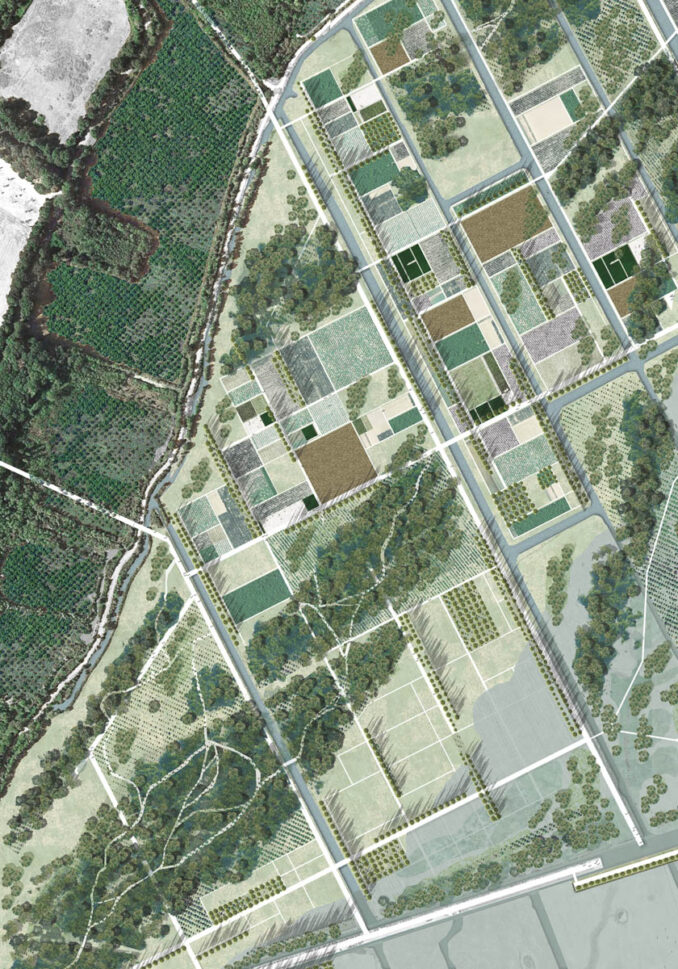
Landscape Laboratory Enlargement
Phase 4
Due to the lack of available data, all the following drawings have been digitally drawn by hand with the support of aerial views and old maps.
Terrain Vague, An Evolving Landscape Legacy
Student: Francesco Cauda, Aarhus School of Architecture (Denmark)
Course: Urban Design and Landscape Architecture
Supervisor: Stefan Darlan Boris
Image Credits: Francesco Cauda

